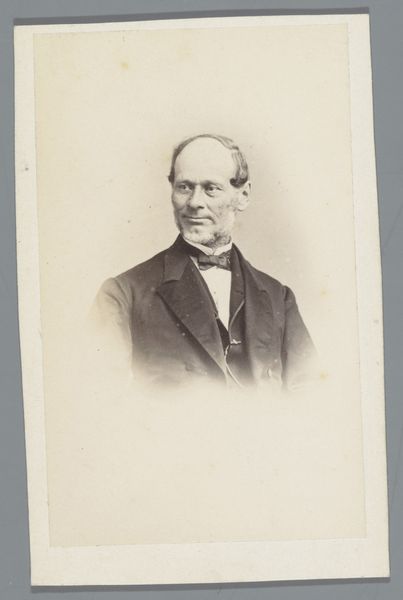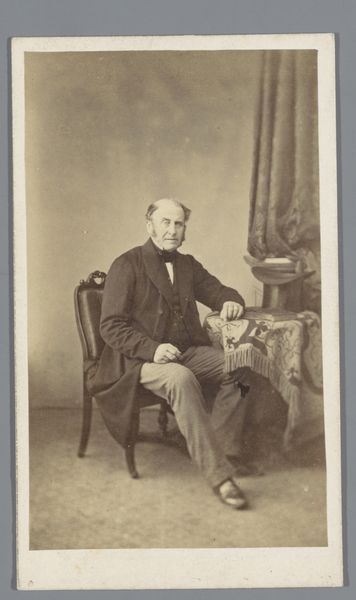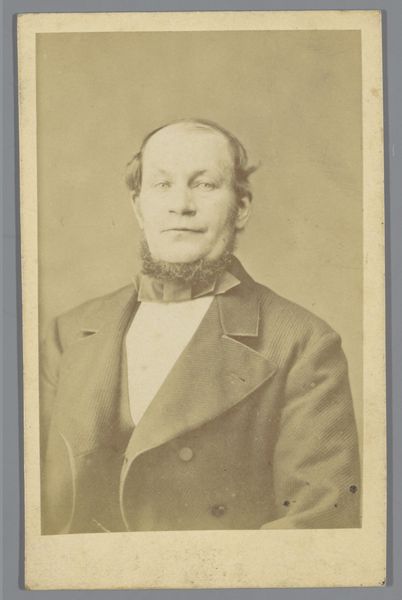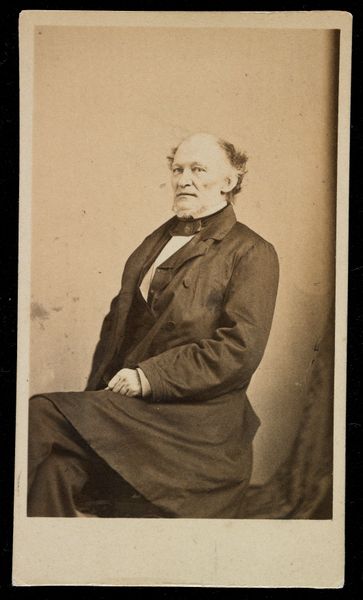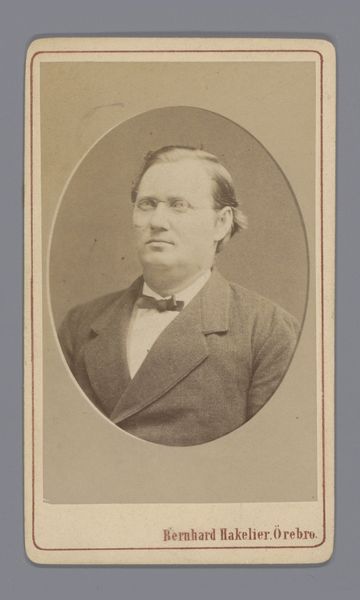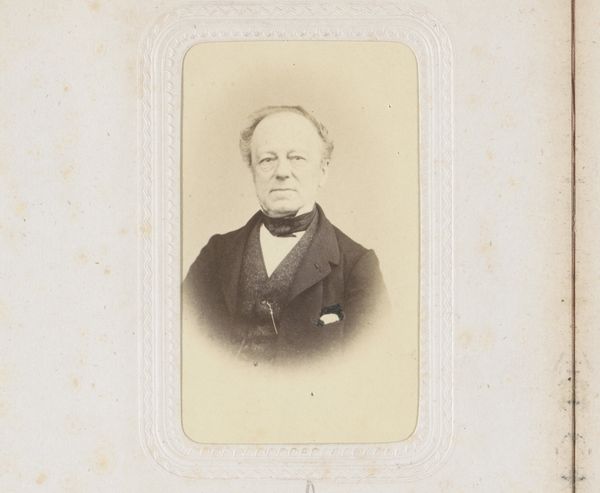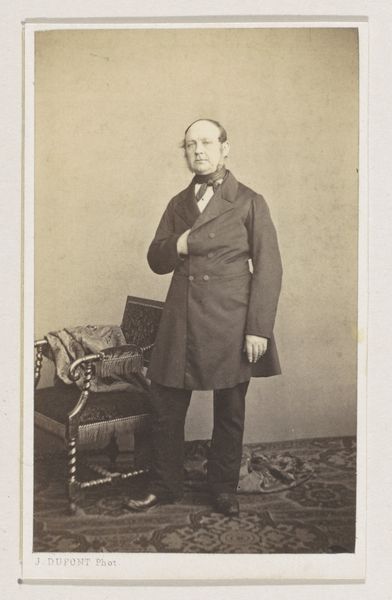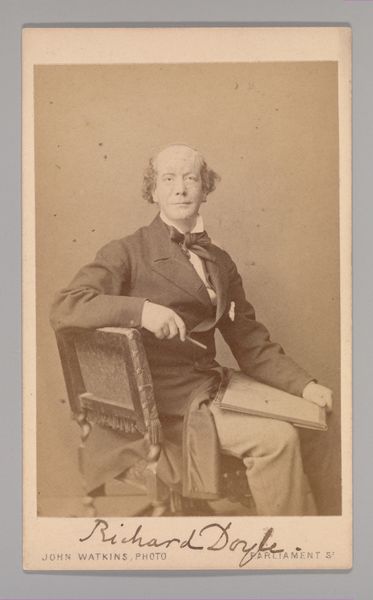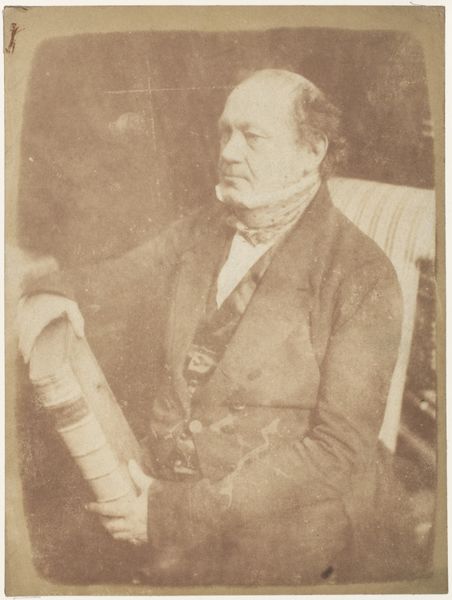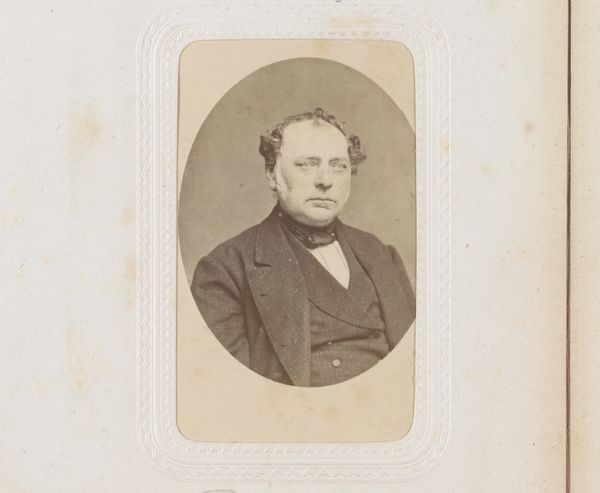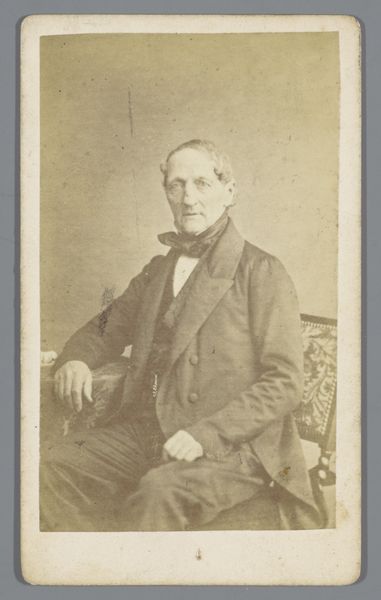
Dimensions: height 105 mm, width 62 mm
Copyright: Rijks Museum: Open Domain
Curator: This is a photographic portrait by Bisson Frères, known as "Portret van een onbekende man," dating roughly from 1852 to 1863, crafted with gelatin-silver print on paper. Editor: Immediately, I’m drawn to the subdued palette—the interplay of muted browns and grays—it sets a tone of somber respectability. The gentleman's pose and tightly clasped hand exude an air of controlled restraint, as if guarding against any perceived emotional excess. Curator: Indeed. The somber tones typical of early photography served a function, given long exposure times; and his serious demeanor suggests much about the era’s social constraints and aspirations. What cultural stories do you think the symbols he wears carry? That small pin or medal? Editor: That small badge intrigues me. It possibly symbolizes membership to some order or recognition of service; it also offers a sharp contrast with the fluid patterns of his bow-tie, and disrupts the continuity of his lapel's curves, redirecting our sightline towards the face. And what can you say about his posture? Curator: His posture, precisely. There’s a certain stoicism embedded in that stiff bearing and firm grip that suggests not just restraint but also the burden of societal expectations of middle-class masculinity. These portraits served to declare civic duty, morality, and prosperity. The gaze feels directed but non-confrontational, conveying respectability without challenging hierarchy. The historical implications are profound. Editor: Agreed. And the compositional choice to position the subject centrally with soft focus enhances a sense of immediacy, making his stern presence very immediate, without sacrificing decorum. I can't help but notice the tonality—a kind of visual austerity that suggests that in 19th century photography, form dictated so much. Curator: Ultimately, in a relatively young medium such as photography, a lot has to do with defining what should be symbolized. And here the sitter and his choices define who he believes himself to be as a symbolic figure. Editor: Precisely, by reducing the aesthetic distractions and prioritizing the clear recording of form and light. Overall, Bisson Frères’ study encapsulates an entire cultural paradigm by merely framing this man in light, shadow, and symbolic apparel. It's very well realized.
Comments
No comments
Be the first to comment and join the conversation on the ultimate creative platform.

